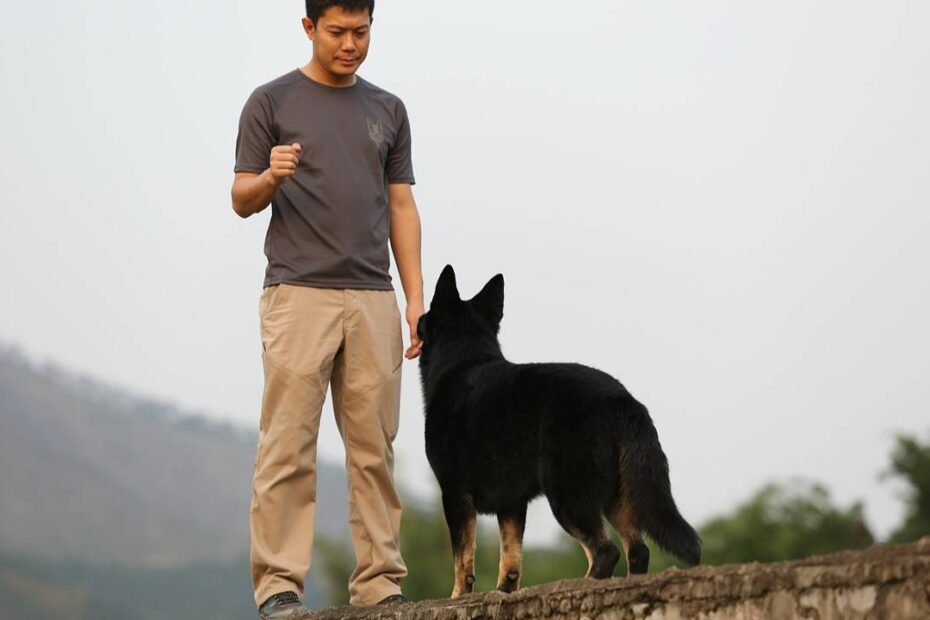Hey there, humums and hudads. I’m here to talk about one of the trickiest aspects of dog training, something that’s often as elusive as your pup’s favourite squeaky toy under the couch – Realistic Expectations. I get it, we’ve all seen those perfectly behaved dogs on TV, but remember, they have their own reality show editors. So, let’s dive into the art of keeping it real with your furiend.
The Myth of the Perfect Pooch
We’ve all been there. You bring home a new dog or start training your current one, and visions of Lassie or Rin Tin Tin dance in your head. Or, you’ve watched Australia’s Got Talent and seen a dog ballroom dancing with its guardian, or…..you’ve just been to The Dog Lover’s Show and seen Kelly’s beautiful Wonder Dogs. But then, in the real world, your pup prefers chew toys over Shakespearean soliloquies.
It’s time to shatter the myth: dogs aren’t born knowing human rules and expectations. They’re more like toddlers in fur coats, and it’s essential to adjust your expectations accordingly. If you’ve trained with me then you know that I consider every dog a 3-year-old human. I’m constantly asking myself questions like “Would I expect that of a 3-year-old?”. If you’ve ever marvelled at the Wonder Dogs, then realise that Kelly has put hundreds if not thousands of hours into training with them.
Set Realistic Goals
It’s crucial to have goals for your dog’s training, but remember, your pup isn’t going to master the entire obedience manual in one sitting. Be realistic in your expectations. Start small and celebrate the little wins. Fido sitting when asked is a win – consider it your pup’s “Aha!” moment.
Break goals down into mini goals. In dog training we call this “approximations”. This is when you break a complex behaviour down into smaller behaviours. Want Fido to put his toys away? This has many steps including looking at the toy, retrieving the toy, releasing the toy, to placing it the toybox. Then generalising the behaviour to other toys. There are 100 little steps that Fido needs to win at before you finally chain it all together into a seamless behaviour.
Consistency and Patience Are Your Best Friends
Just like Rome wasn’t built in a day, your dog’s perfect behaviour won’t happen overnight. Be patient; dogs (and humans) learn at their own pace. If you’re working on a tricky behaviour and it feels like your pup is more interested in chasing their tail, take a deep breath and remember that progress takes time. Keep your cues consistent and don’t leave it days between training sessions. A few minutes a couple of times a day is ideal. Break the behaviour down into approximations so you can both have plenty of wins along the way. Above all, have some patience. You need to be patient with your pup, and you need to give yourself some grace. Everyone is learning all the time and that includes you and your pooch. Take the information your dog has given you and use it to work out a potential solution to your struggle, then give it a whirl.
Realise That Perfection Doesn’t Exist
Repeat after me: “There’s no such thing as a perfect dog”. Every pup has their quirks and personality traits. Sure, your neighbour’s dog might ace every trick, but your dog’s unique charm is what makes them special to you. Embrace the quirks; they’re what make your dog one of a kind.
Progress, not perfection. All those little 1% improvements add up with compound interest. Before you know it, your furkid will be the Little Angel you always dreamed of. Well, most of the time. Remember that your dog is a sentient being and as such will have their own likes, dislikes, opinions, and choices to make.
Stay Calm and Carry On
Remember, your dog can pick up on your emotions. If you’re stressed or frustrated during training, it’s only going to make things harder for both of you. Stay calm, be consistent, and reward your pup for good behaviour. Calmness for you pooch is also so important. Calmness is both King and Queen in my home and I encourage you all to crate/boundary/place train and teach your Fido how to calm down quickly after being excited. Sniffing, licking, or chewing are calming activities if your dog is having troubles self-regulating. Also, please remember that positive reinforcement is your most powerful training tool. Getting frustrated will gain you nothing. Ending a session on a small win will mean your pup will want to train with you again to get a reward. One of my mantras is “no more one more time”. Once you’ve had a win then end the session on a high, celebrate your win and then end your session.
The Doggy Journey
The journey to a well-behaved dog is just that – a journey. It’s a winding road with a few pit stops along the way, a few wrong turns, and sometimes even retracing your steps. You and your pup will have good days and not-so-good days. The key is to keep your expectations grounded and continue working together.
So, in the world of dog training, finding the balance between teaching and enjoying time with your dog is easily achieved with games-based training. Keep it real, have fun, and remember that progress is a process, not a destination. Embrace your dog’s unique personality and cherish each step on the path to canine greatness. It’s a journey filled with tail wags and funny moments, and if you ask me, that’s the real perfection right there!
Well behaved dogs aren’t born, they’re trained. So, get training!
Game On! Let’s Play!
Hxx

